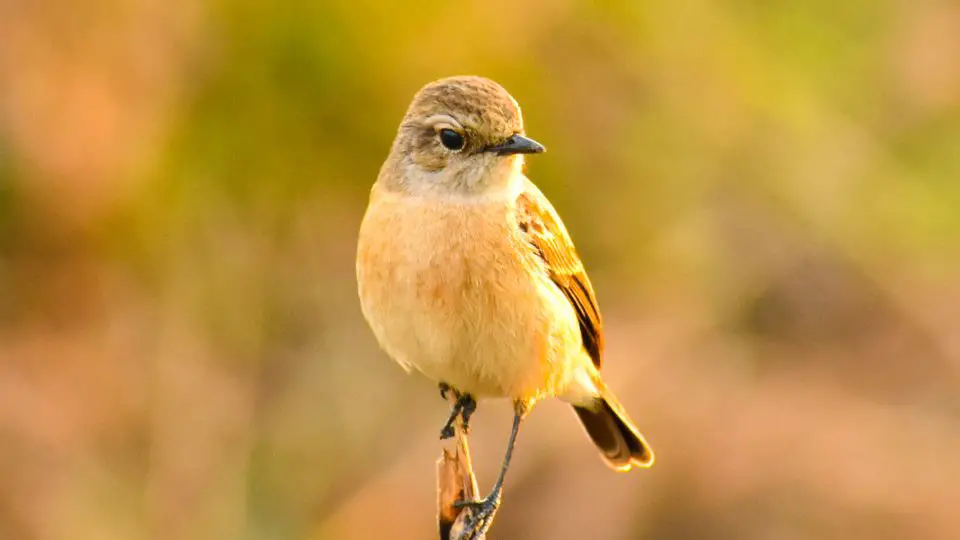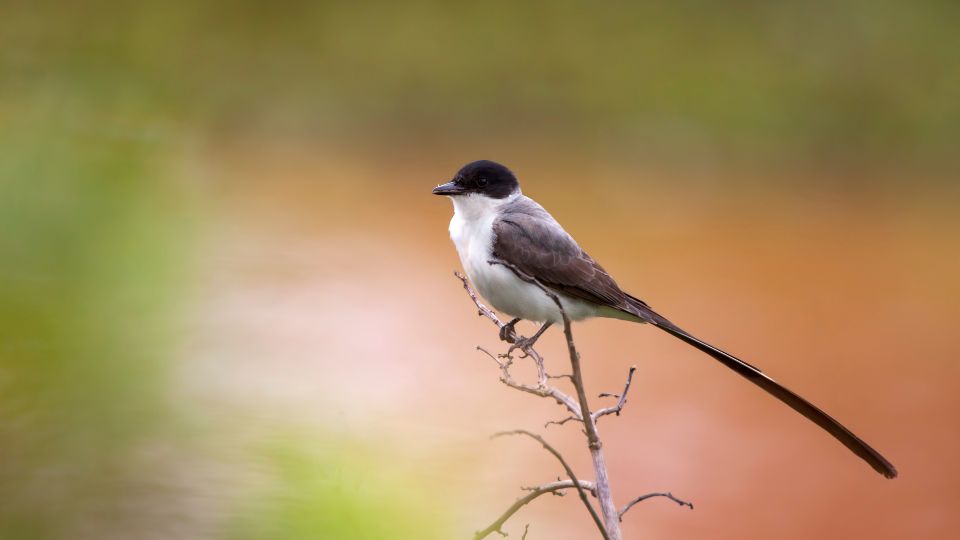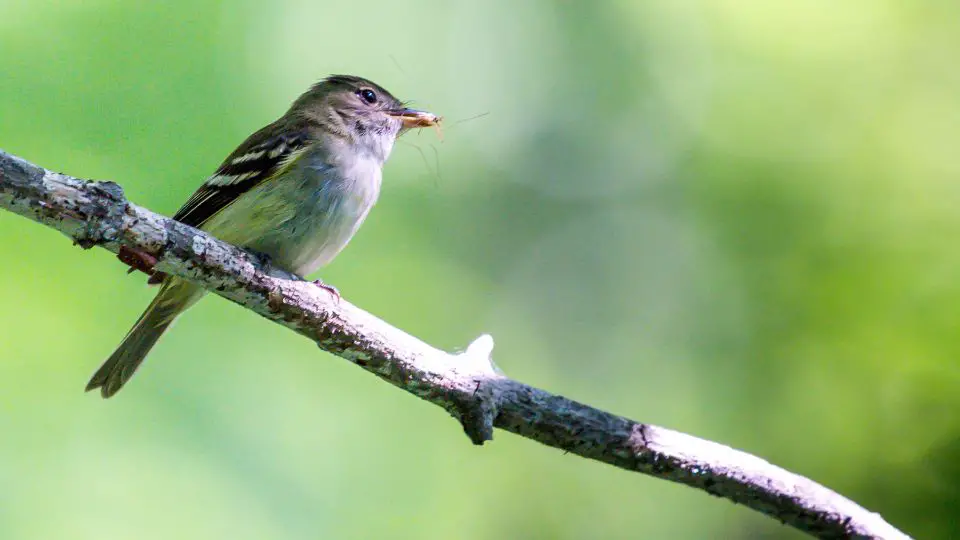The tyrant flycatcher is one of the largest species of passerines in the entire world. Flycatchers are known for their yellow, green, or orange plumage and have aggressive personalities that are unusual for such a small bird.
Flycatchers are long-distance migrators, and predominantly reside in Central and South America. US based birders that want to catch a glimpse of the Flycatcher, can do so as they migrate from Canada to South America.
The conservation status of flycatchers in North America has dwindled over the years, but avid bird watchers can still catch a glimpse of these charismatic birds if they observe closely. Avid birders often have some type of flycatcher on their must-see bucket list, so let’s dive into some of the most noted subspecies of flycatchers!
What Are Tyrant Flycatchers?
Flycatchers are agile members of the passerine family members living in North and South America. There are over 400 bird species of flycatchers in North, South, Central America, and the Caribbean. While most subspecies of flycatchers opt for tropical climates, some prefer wet boreal forests and peatlands or coniferous forests in North America. They are found in areas in New England, such as New York, and as far north as Canada.
These birds of North America are migrant songbirds and often travel alone when the breeding season is over to warmer climates. While some species of flycatchers migrate as far south as Panama, others travel short distances to places like Mexico, Florida, or Texas.
Subspecies of Tyrant Flycatchers
The name ‘Tyrant’ flycatcher is a nod to the very aggressive behavior of this bird. While the tyrant flycatcher boasts a small frame, these birds are known for their very aggressive behaviors that strike fear in larger birds that get too close to their nesting sites.
With over 400 subspecies of tyrant flycatchers peppered throughout the world, identifying each subspecies of bird is quite the challenge. Over the years, their population trends have declined, most likely due to deforestation of boreal forests. For birdwatchers fascinated by this unique songbird, let’s focus on five of the most noted tyrant flycatchers.

Yellow-Bellied Flycatchers
Yellow-bellied flycatchers (Empidonax flaviventris) look similar to goldfinches, but a few key features make them stand apart. Overall, these North American birds have a mute yellow coloring on their head and back, with black and white feathers on their wing bars. What makes them stand apart is the bright yellow feathers found on their underparts and yellow eye rings.
They are very similar to other members of the flycatcher family, such as the Pacific-slope and Cordilleran flycatchers. They spend their breeding months in bogs, boreal forests, swamps, and peatlands throughout most parts of Canada. Residents living in the eastern US States may catch of glimpse of these bright yellow birds as they migrate for the winter south to Mexico.

Fork-Tailed Flycatcher
There’s no mistaking the fork-tailed flycatcher! As the name suggests, this subspecies is noted for its elongated tail feathers that form a sharp fork. While it’s difficult to note its tail while perched, it becomes abundantly noticeable once it takes flight.
This subspecies of flycatcher has very similar coloring to that of a chickadee. Fork-tailed flycathcers have a black cap, black eyes, and a white underbelly. What makes it stand apart from the black-capped chickadee is its exaggerated tail feathers and notes of gray on its wings.
Fork-tailed flycatchers live primarily in flat grasslands in Mexico and South America. The closely related scissor-tailed flycatcher has a similar appearance and lives farther north in parts of Texas and Mexico.

Royal Flycatcher
It’s unlikely to spot a royal flycatcher around your backyard bird-feeders. This impressive exotic bird is only found in the Amazon basin in certain parts of South America. It has a long narrow beak used to pluck insects from the sky and cinnamon-colored plumage.
What’s spectacular about the royal flycatcher is its hammerhead crest of electric orange feathers. While it doesn’t raise its crest often, the raised crest reveals a stunning array of orange and pale blue feathers that is on every birder’s bucket list!

Least Flycatcher
The least flycatcher subspecies is a smaller flycatcher. While the royal flycatcher is a rare sight, the least flycatcher is more common throughout North America. Their breeding range includes parts of Canada, and they fly down to the southern tip of Florida and Mexico during the non-breeding season. Bird watchers that live in the eastern portion of the United States may catch a glimpse of a least flycatcher as it travels from Canada to Mexico during migration.
The least flycatchers vary in color. Some have striking yellow accents and long tail feathers, while others strike a more muted shade of olive green. One of the fastest easiest ways to spot a least flycatcher is to check its yellow underparts. The least flycatcher looks very similar to a finch or house sparrow, but its bright underbelly indicates it’s a flycatcher.

Acadian Flycatcher
During the breeding season, those that live on the east coast of the midwest United States can catch a glimpse of the rare Acadian flycatcher. What makes this subspecies of flycatcher unique is its greenish-yellow feathers. It has a muted shade of green on its head and wings that look similar to moss and lime green underparts, making it stand out from other flycatchers. Its breeding range spans most of the midwest United States and stops short of New England. Its wintering ground is spent in parts of eastern Mexico and the Caribbean.

